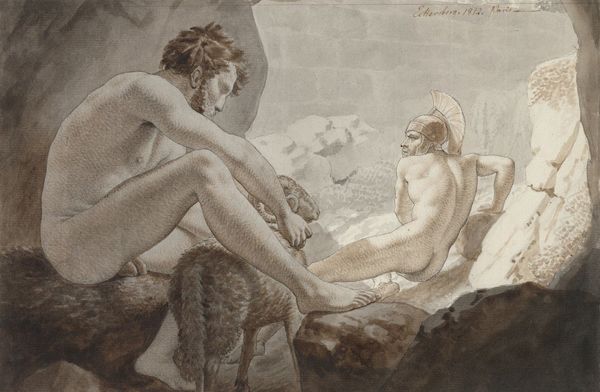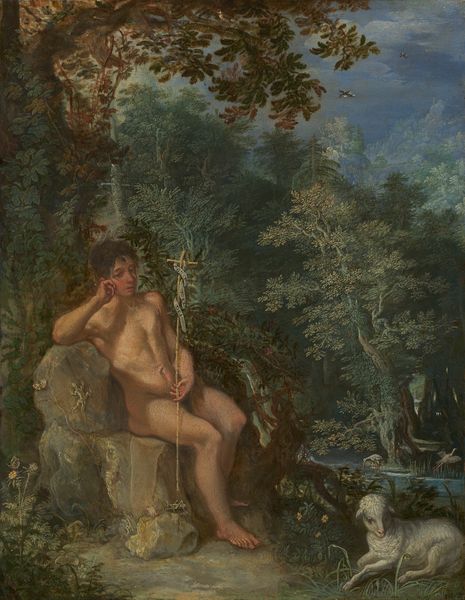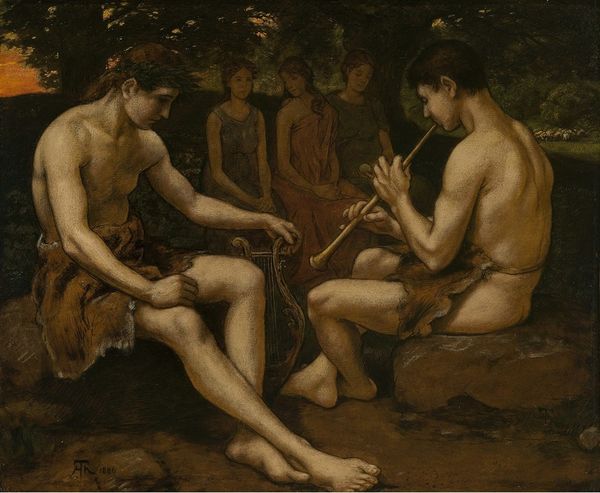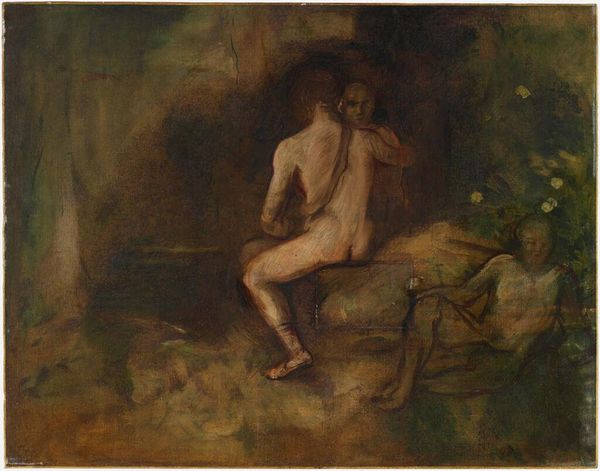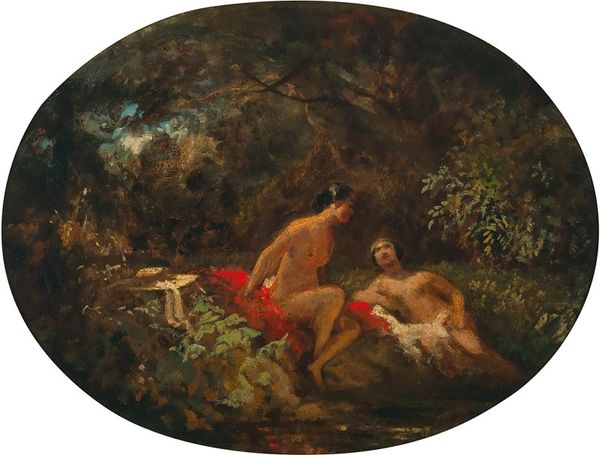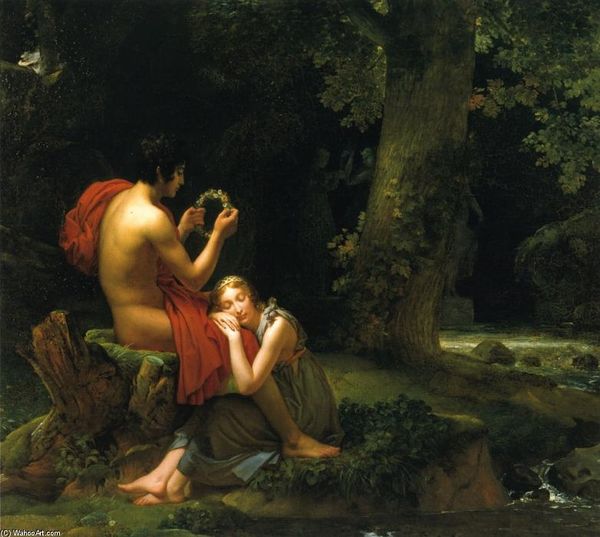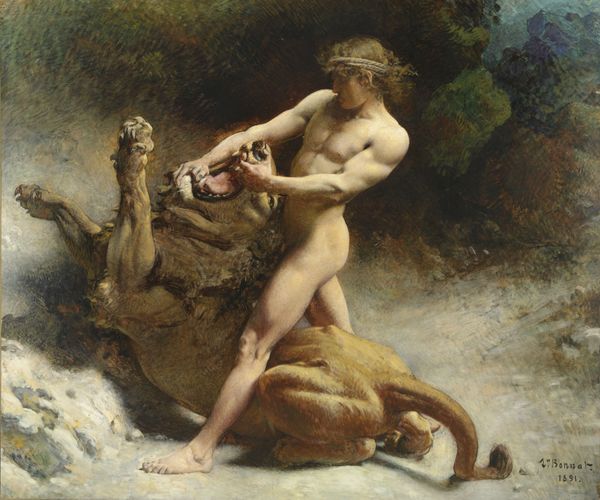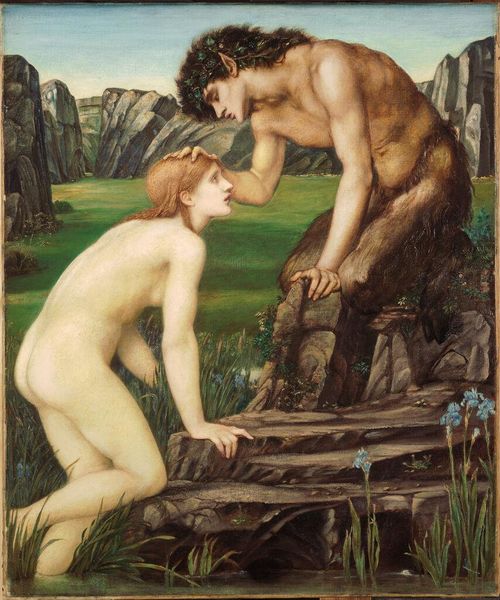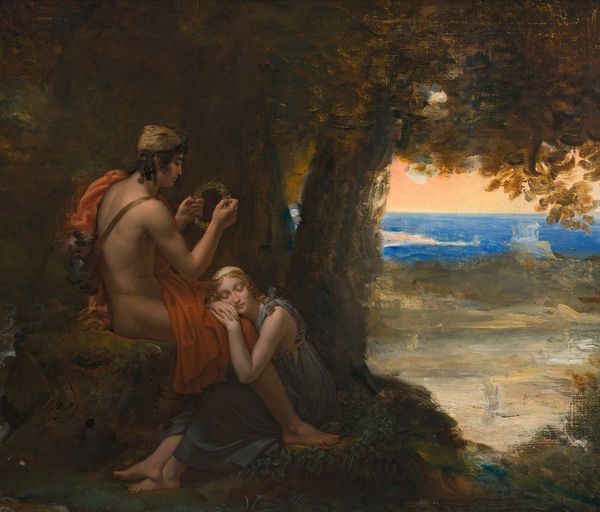
#
impressionistic
#
imaginative character sketch
#
fantasy concept art
#
fantasy art
#
fantasy illustration
#
possibly oil pastel
#
fun fantasy
#
character sketch
#
mythology
#
abstract character
#
fantasy sketch
Copyright: Public Domain: Artvee
Curator: This artwork, created in 1812 by Christoffer Wilhelm Eckersberg, is entitled "Ulysses Fleeing the Cave of Polyphemus". Editor: It's striking how Eckersberg captures this moment of quiet, desperate action within a composition of incredible stillness. The confined, cavernous space really heightens the tension, doesn't it? Curator: Absolutely. Eckersberg, working within a Neoclassical framework, illustrates a pivotal scene from Homer’s *Odyssey*. But it’s essential to remember that representations of Ulysses, especially during the early 19th century, often became entangled with contemporary anxieties about leadership, heroism, and even colonial power. How do we read Ulysses’ cunning escape in light of these historical contexts? Is it valor, or is it something else? Editor: That’s a really compelling angle. I’m also drawn to the subtle homoerotic charge in the painting. The figures are nude, presented in a manner that undeniably celebrates the male form, yet in very different poses, in ways that are not uncommon throughout artwork featuring the tale. What does that suggest to you? How might a queer reading complicate our understanding of the scene's power dynamics and perhaps speak to notions of brotherhood and betrayal? Curator: That brings a rich layer to the interpretation. Ulysses' triumph hinges on both his cleverness and his physical strength, echoed in this rendering, particularly as seen against Polyphemus. The sheep become symbols of escape but also of manipulation and deceit. We must ask who the lambs being lead to slaughter represent, in the context of societal hierarchies. It begs the question: what does it mean to assert agency, particularly when achieved through strategies of deception and potential violence? Editor: Right, and if we are using a modern lens to examine it, we can consider whether this is truly "fantasy" and how we decide whose lens or story dictates it. As a classic mythological image rendered through such poised restraint, there's always so much to unravel and reconsider about power and complicity. Curator: Indeed. These artistic renditions allow viewers the chance to dissect how heroic narratives, or power constructs have and can inform social behaviors in their own context. Thank you for enriching the dialogue! Editor: My pleasure, the interplay of historical and contemporary interpretations only heightens my appreciation of the artwork and its modern-day relevance.
Comments
No comments
Be the first to comment and join the conversation on the ultimate creative platform.
